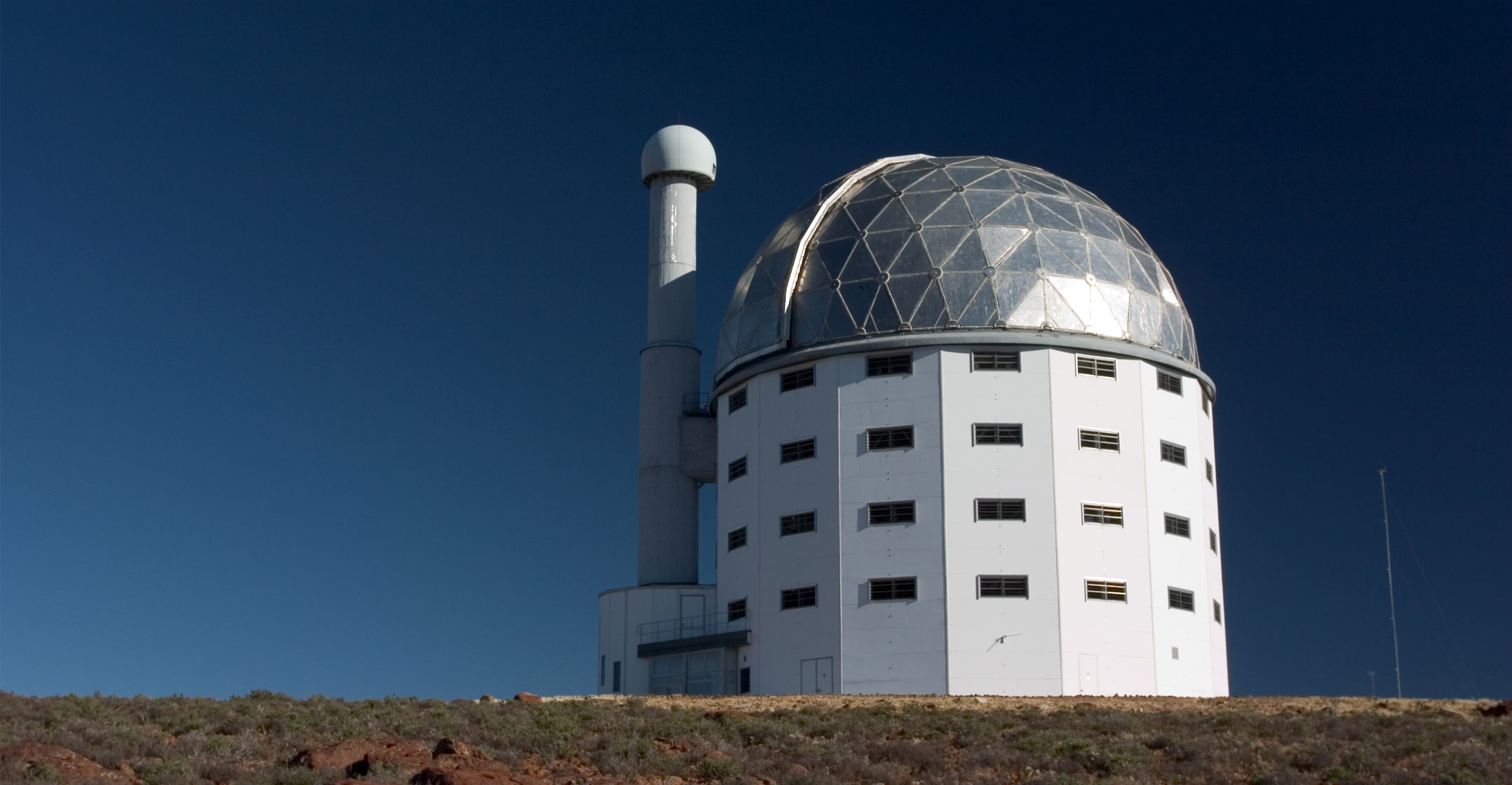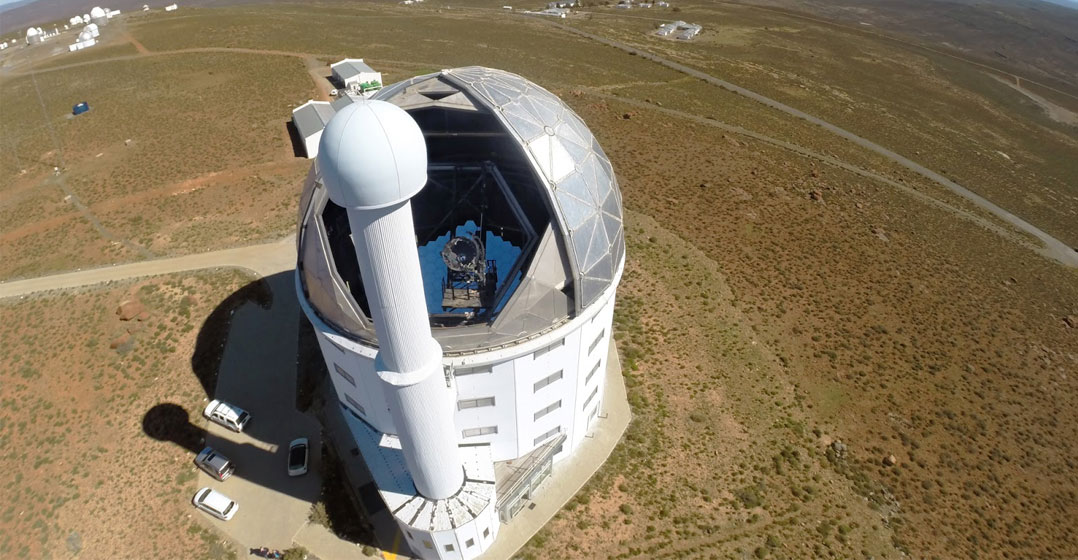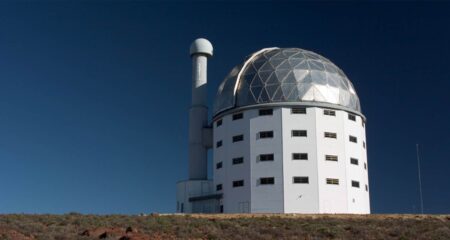
South African scientists have announced that two local telescopes have for the first time detected gravitational waves that are a result of a merging of two neutron stars.
The two telescopes are the South African Astronomical Observatory (SAAO) in Cape Town and the Southern African Large Telescope (Salt) in the small Karoo town of Sutherland.
According to previous research, the neutron stars — which are the smallest and densest known stars — collided 130m light years ago, an event that resulted in gravitational waves being emitted and detectable for 100 seconds.
In an interview shortly after the announcement at the SAAO headquarters in Observatory, Cape Town, on Monday afternoon, Daniel Cunnama, a postdoctoral research fellow at the South African Astronomical Observatory, said the detection, which happened on 17 August, was hugely significant for astrophysics.
“We have for the first time detected gravitational waves and electromagnetic radiation, or light, from the same event [the merging of the two neutron stars]… and we have managed to follow up this event with South African telescopes in Sutherland. Multiple telescopes contributed to the understanding of this astronomical event,” he said.
Leading up to the detection, a total of about 4 000 scientists and astronomical researchers from observatories, universities and other institutions from around the world and many in South Africa collaborated in the research.
Seven papers have come out from the South African Astronomical Observatory around this event already. Over 70 observatories were included in this observing campaign.
“The original detection was made in the US, along with the European Space Observatory as well as many others that were involved.
“It is a great day for South African astronomy. We have shown ourselves to be able to contribute valuably to an international endeavour.
‘World-class telescopes’
“We have world-class telescopes here, which we have managed to set up over the last 20 years and we can really do wonders for future science such as this,” said Cunnama.
About 130m years ago, in a distant galaxy, two incredibly dense objects, known as neutron stars, merged together in a cataclysmic explosion.
According to astronomers, this event was so violent that it destroyed the very fabric of space/time.

The effects of that explosion travelled at the speed of light and reached earth on 16 August and were detected by the US-based Laser Interferometer Gravitational-Wave Observatory (LIGO) and the European-based Virgo detector.
Subsequent observations by Salt and other telescopes in Sutherland have played a similar role in understanding that event. For the first time, local astronomers have been able to identify and study the source of the gravitational wave event.
The collision also resulted in an explosion of light, initially in the form of gamma rays, which were detected by space-based telescopes. The gamma rays were then followed by X-rays, ultraviolet, optical, infrared and radio waves.
This allowed astronomers to localise the event within hours and launch follow-up observations by Salt and numerous other telescopes in South Africa and around the world.
Making an announcement earlier on, Cunnama said: “These extremely small and dense objects are the remains of giant stars that have exploded as supernovae and more mass than the sun is compressed into a sphere that is about the size of a city. These neutron stars are commonly found in pairs and Einstein’s theory of general relativity predicts that these incredibly large objects should produce detectable gravitational waves when they merge.”
The first detection of gravitational waves, made on 14 September 2015 and announced on 11 February 2016, was a milestone in physics and astronomy. It confirmed a major prediction of the general theory of relativity, and marked the beginning of the new field of gravitational-wave astronomy.
Since the first detection, there have been three more confirmed.
On 3 October, the three leaders of the research — physicists Rainer Weiss of the Massachusetts Institute of Technology, and Barry Barish and Kip Thorne of the California Institute of Technology — were awarded the 2017 Nobel Prize in Physics for their work on gravitational waves.
Busy day
Petri Vaisanen, head of Salt astronomy operations, who was the observer stationed at the Salt telescope, said 18 August — the day after the LIGO detection — was a busy day at the Karoo site.
“After a flurry of messages and e-mails that afternoon in Sutherland, I finally got the coordinates. There was a new object, which had caused the whole of space/time to ripple, sitting at the outskirts of the galaxy NGC 4993.
“I knew that everyone with a working telescope in the southern hemisphere was scrambling to get data on it. We decided to drop all other plans for that evening, and went for a spectral observation with Salt, since you need a large telescope for such observations breaking up the light into all its colours.
“It was a difficult observation since we had to do it in twilight, before it got properly dark. I’m very proud of the whole team. Salt was only the third observatory to provide a spectrum of the target, and the first spectrum that clearly started showing anomalous behaviour proving that this was no run-of-the-mill transient event.” — SAnews




